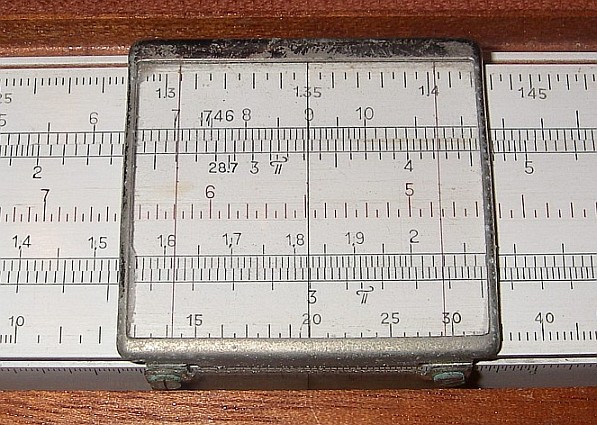How to Use a Slide Rule

Logarithms serve as the basis for creating computational tools and one of the most remarkable measuring tools is the slide rule, which has greatly facilitated engineers and technicians around the world for more than 360 years.
For centuries, the slide rule was a simple but extremely effective device to perform complex arithmetic operations on large numbers.
Before the invention of the electronic calculator, the slide rule served many generations of engineers who used it for complex mechanisms and architectural calculations.
The first version of the slide rule was developed in 1622 by the English amateur mathematician William Oughtred. However, it has encountered continuous improvements following the efforts of researchers. The prototype of the modern slide rule is a logarithmic scale E.
A Slide rule, working like an analog computer, allows you to perform several mathematical operations, including multiplication and division of numbers, powers (most often in the square and cube), the computation of logarithms, trigonometric functions and some other operations.
The principle operation of the slide rule is based on the fact that multiplication and division of numbers can be replaced by the addition and subtraction of logarithms respectively.
Up until the 1970s, slide rules were as common as typewriters and mimeographs. Engineers easily multiplied and shared any numbers after taking the square and cube root of any figure through this helping tool. However, it required a little more effort to calculate the proportions of sines and tangents.
Adorned with dozens of functional scales, the slide rule symbolized the hidden secrets of science. In fact, most of the work was carried out with the help of barely two scales, as virtually all of the technical calculations were reduced to multiplication and division.
Instructions
-
1
To calculate the product of two numbers, make sure that the beginning of the sliding scale is aligned with the first factor on the fixed scale. Opposite that figure on the fixed scale is the result of multiplying these numbers. Move the slider (at the left hand) so that the end of the A scale is directly over the other figure at the end of the B scale.
lg (x) + lg (y) = lg (xy) -
2
To divide the numbers, check the sliding scale divider and combine it with the other figure divisible by a fixed scale. Start the sliding scale to know the result:
lg (x) - lg (y) = lg (x / y)







